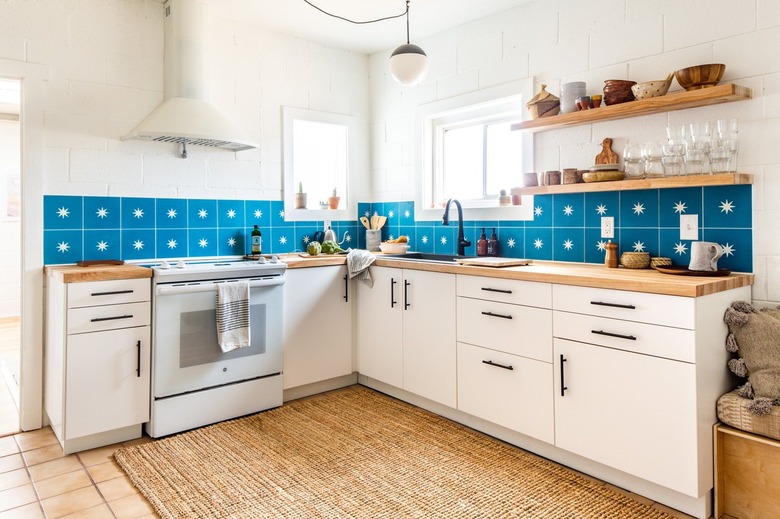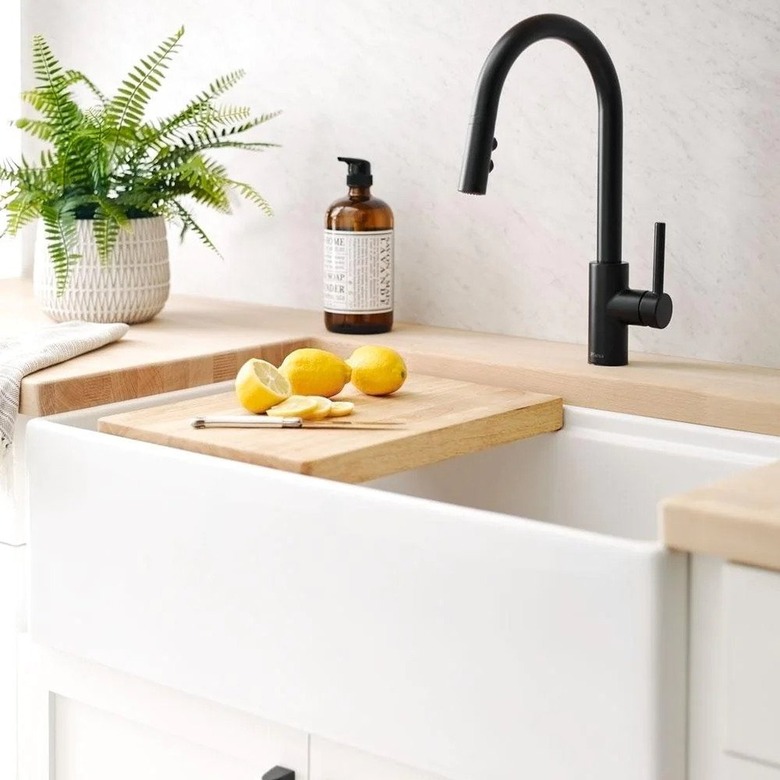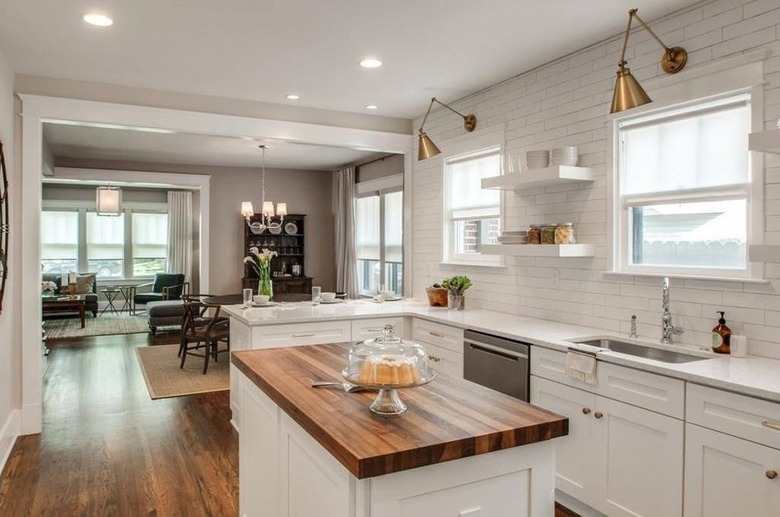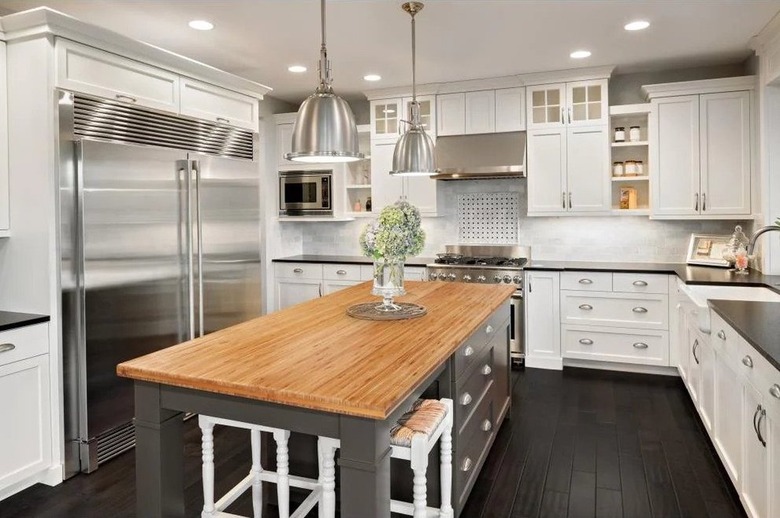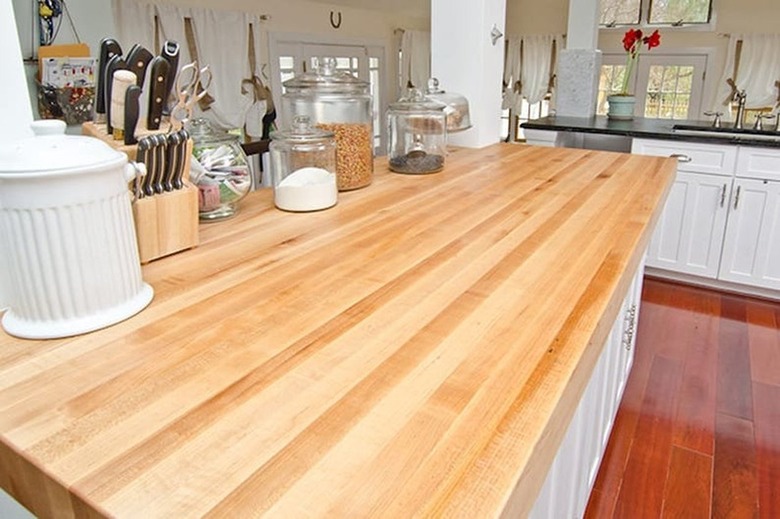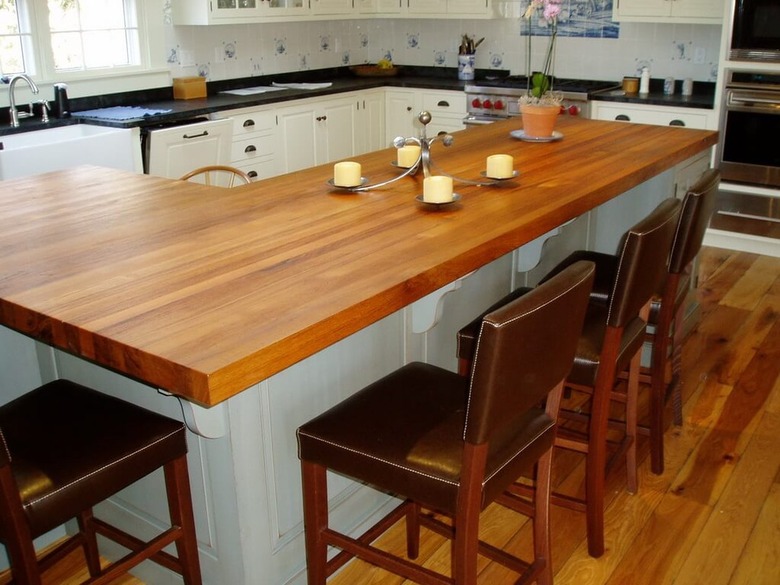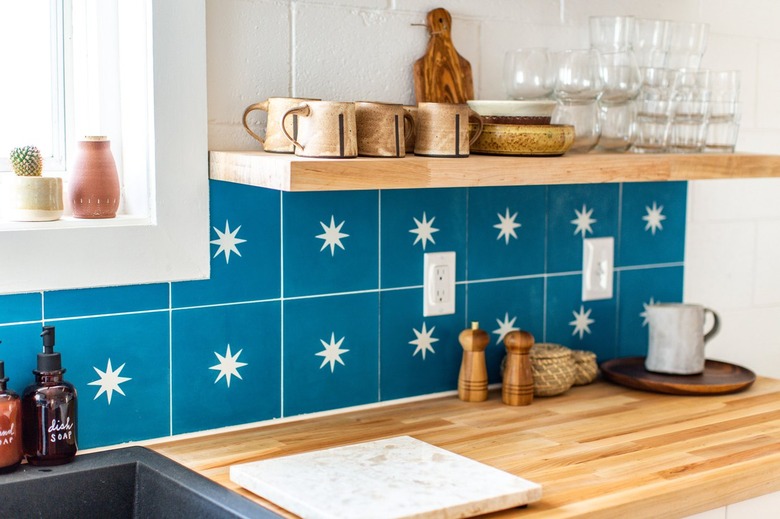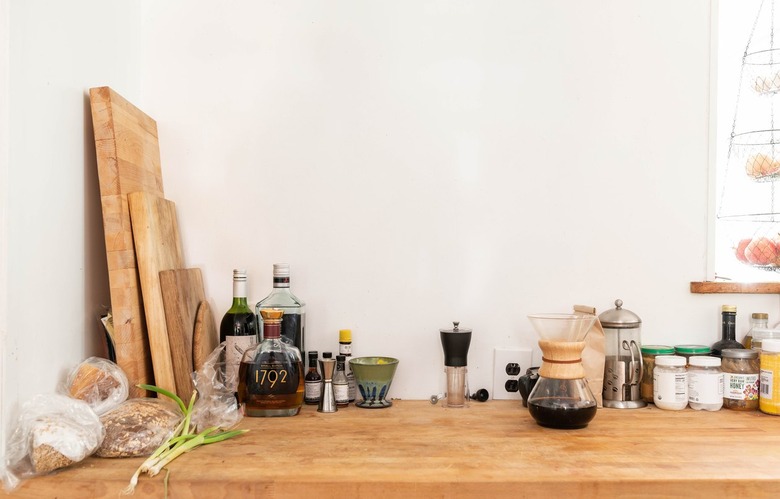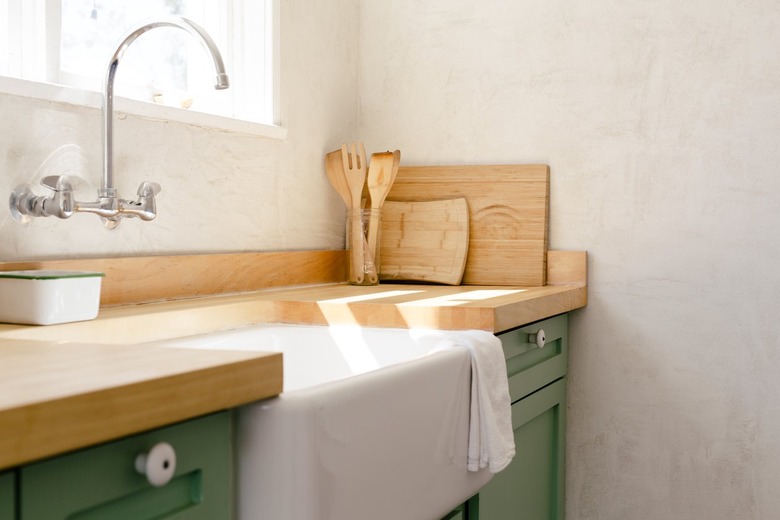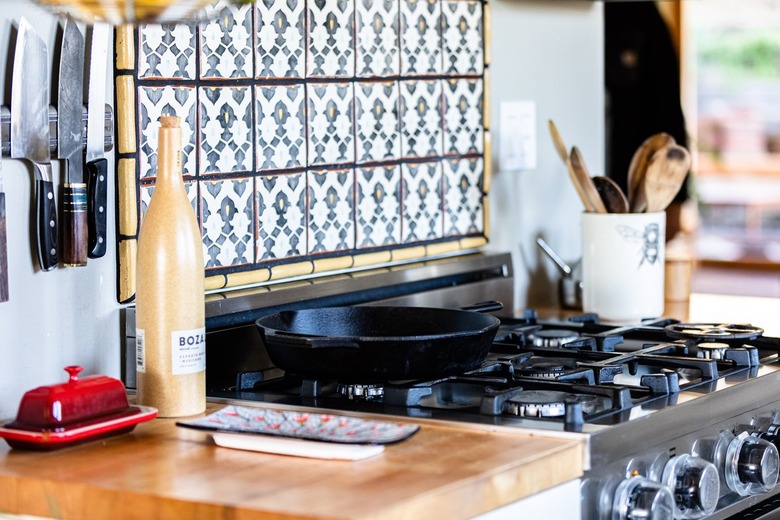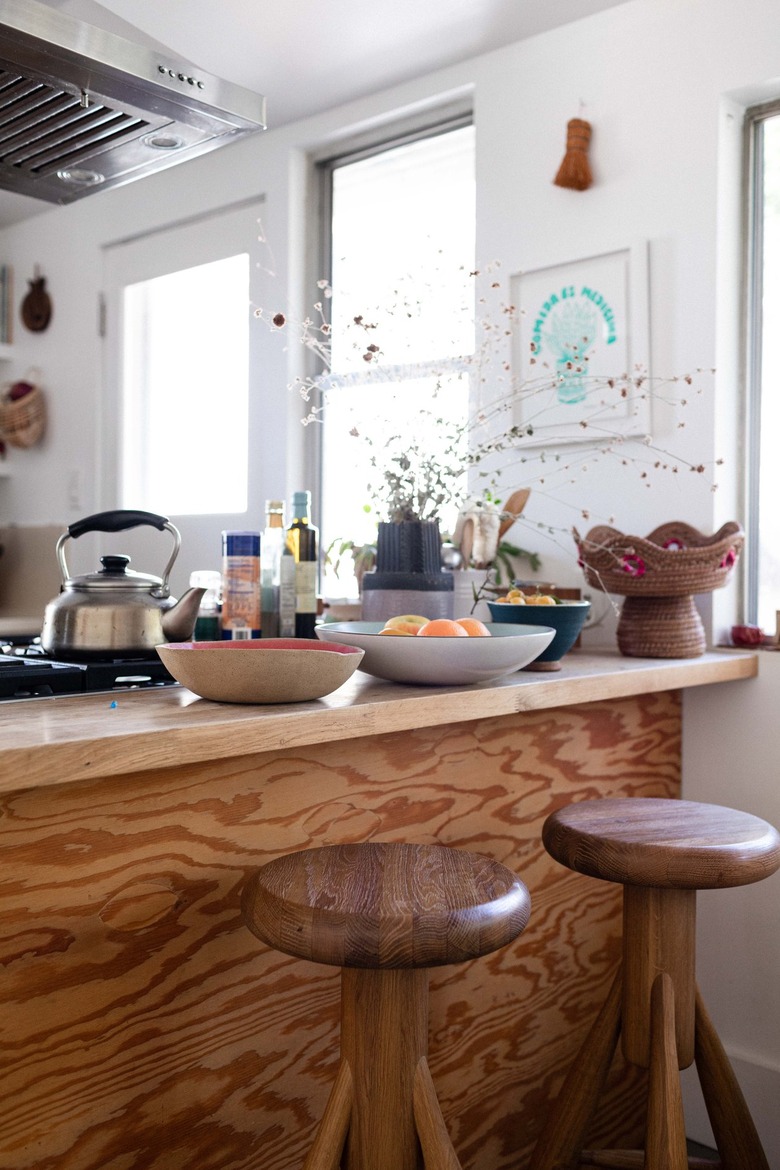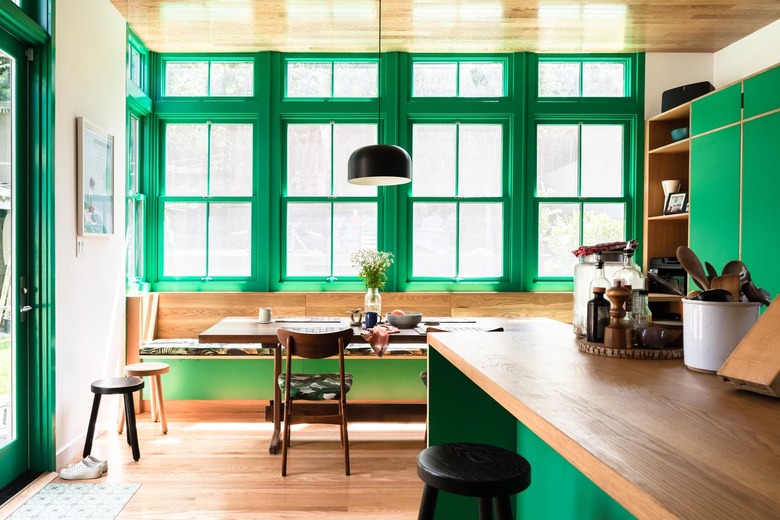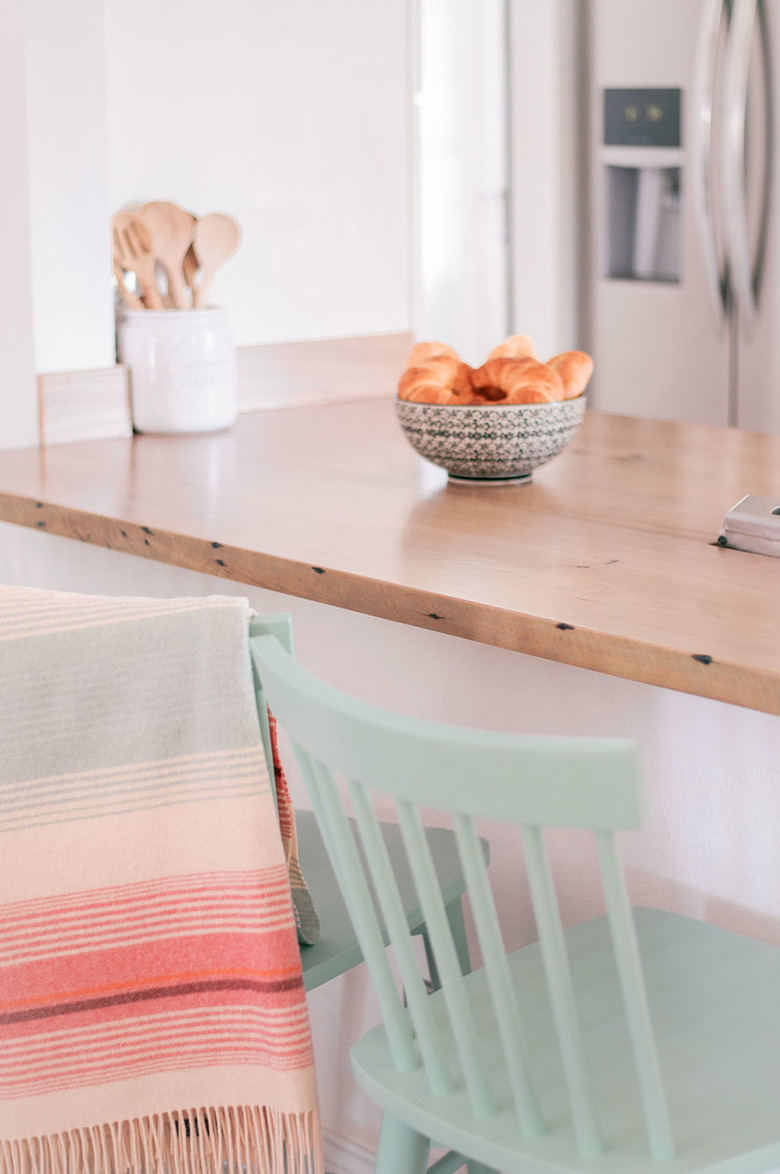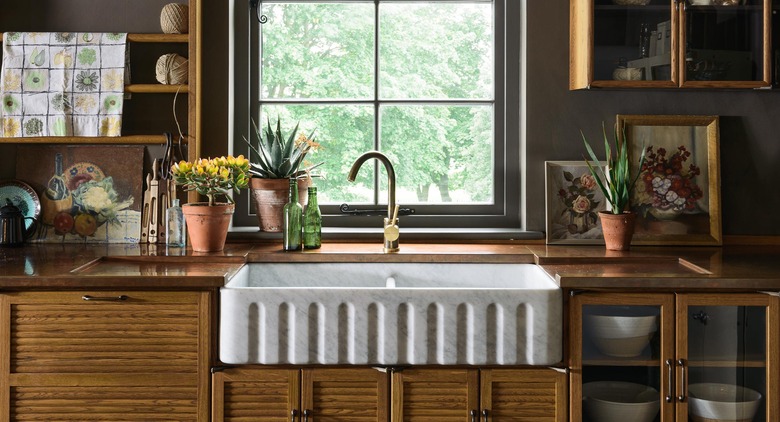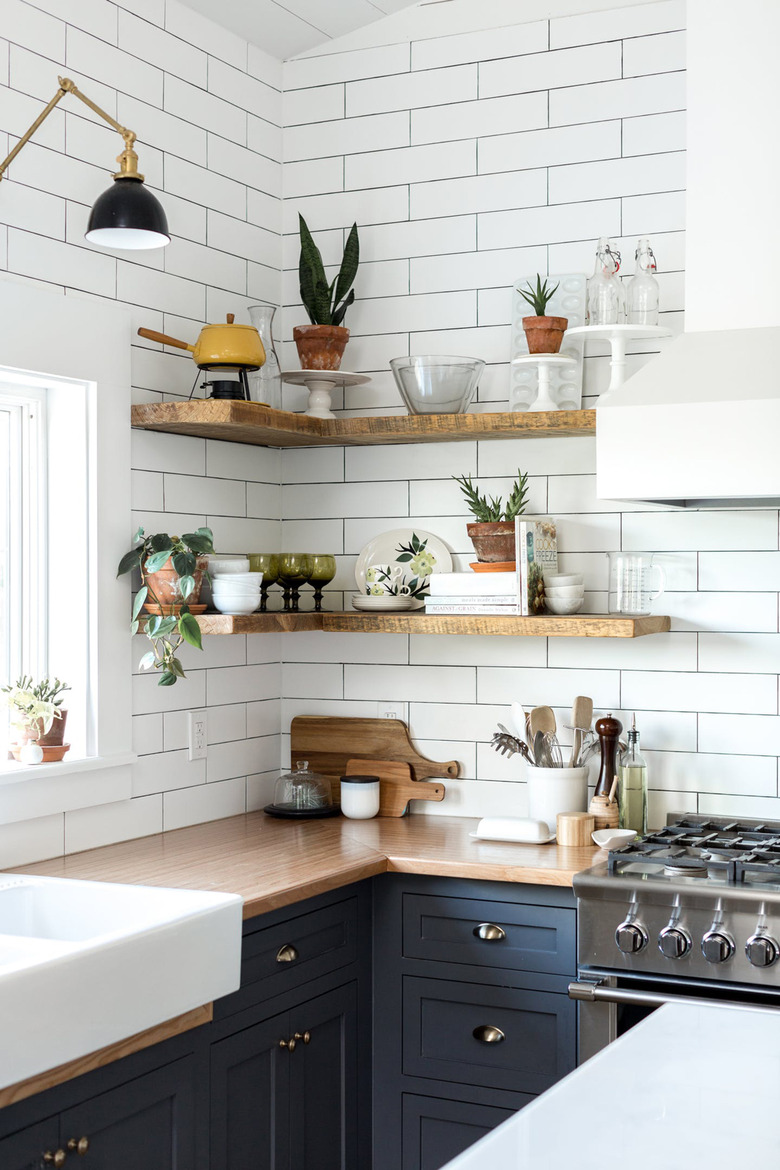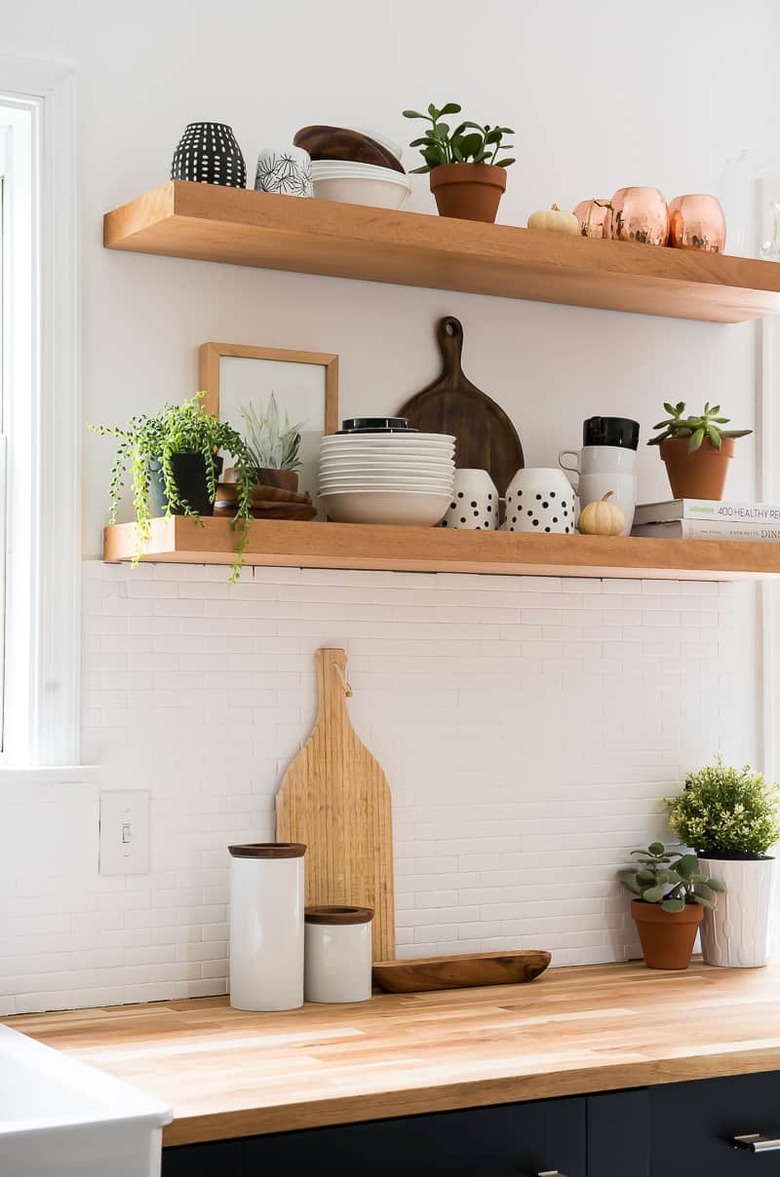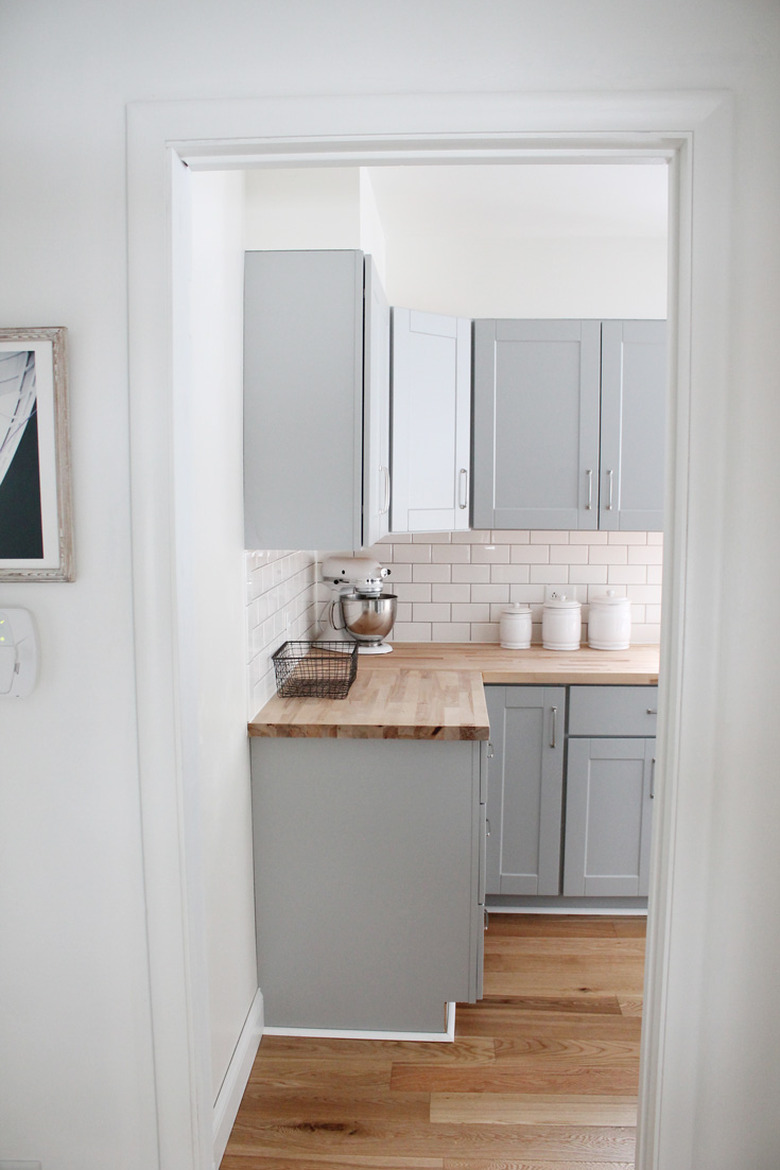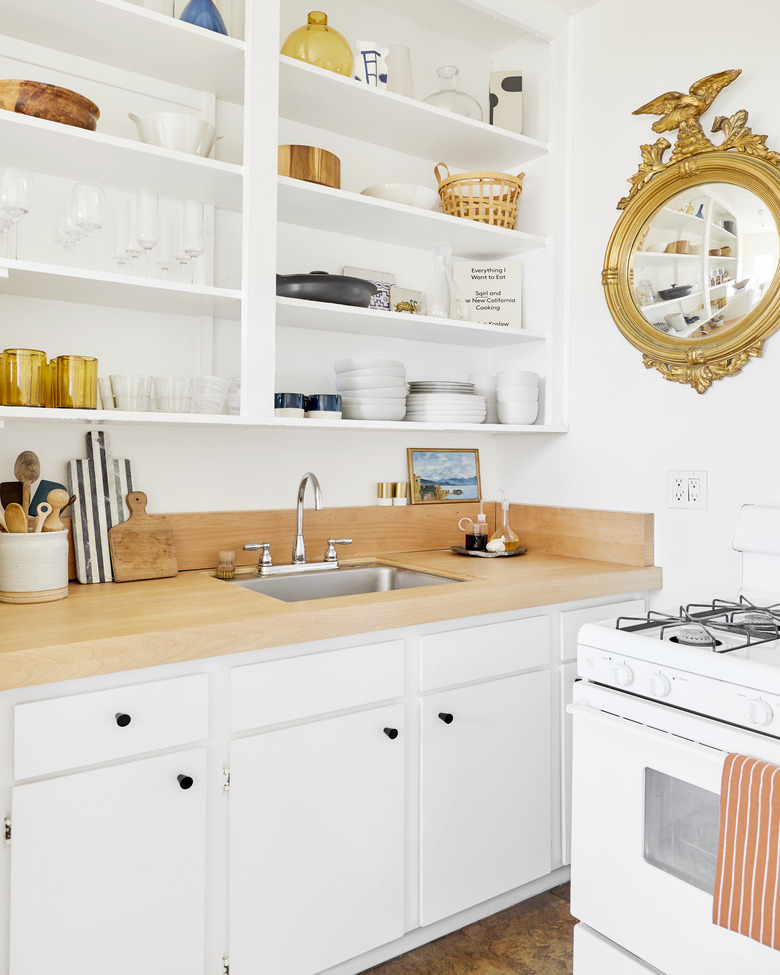Wood Kitchen Countertops: The Guide For Prospective Buyers
With the trends turning toward all things seamless and organic, it shouldn't come as a surprise that natural wood kitchen counters are popping up in modern cook spaces everywhere. The look is classic and old-world but still so fresh and practical. Originally used solely as cutting boards for butchers (hence where the name butcher block countertop comes from), these types of surfaces were once large tree stumps. To improve upon the design, though, butchers began to use smaller pieces of maple wood that were glued together to create a flat board that could be sanded when necessary. That design evolved to become the food-safe countertop material we're familiar with today.
Ready to learn more about this butcher and interior designer approved cutting surface into your remodel today? This helpful guide will tell you all you need to know about picking the right wood, the pros and cons, and even a few kitchen design tips. Let's get started.
The Best Wood for Kitchen Countertops
Birch
If you're in the market for a light and bright counter, birch wood is for you. It features a fine grain and also holds up incredibly well against water spills, heat, and more.
American walnut will warm up any kitchen in a flash. A single slab typically features a vast array of chocolatey-brown colors and a sleek black grain. And this wood looks especially striking as a focal point on the kitchen island. Simply treat it with mineral oil to keep it looking fresh.
Bamboo counters will look right at home in a variety of kitchens. Whether your style leans toward modern, Scandinavian, or bohemian, the caramel-hued material will make your space feel super cozy and luxe. It's sourced from grass, not true wood, though, which makes it an incredibly eco-friendly choice as well.
One of the original materials used for traditional butcher block tops, maple wood is incredibly durable and long-lasting. Annual oilings will make the straight, uniform grain look richer, but this kind of wood countertop can withstand endless food preparation and chopping sessions.
If you have an industrial prep kitchen or regularly cook huge meals for a large family, you may want to invest in a cherry wood island. This is one of the hardest types of lumber and is nearly impossible to dent or scratch. A few infrequent applications of tung oil will keep your cherry counters looking brand new.
Types of Wood Grain
There are typically three different ways that wood boards can be connected to form a sturdy countertop, and those layouts create wood grains that are referred to as either face grain, edge grain, or end grain.
Face grain is typically composed of wide boards that are laid flat and glued together to create a nearly seamless fusion. It's very likely to show dents, though — so it may not be best for surfaces that see a lot of cutting, chopping, and hot pans.
Edge grain is the most common, and to create the look, boards are laid out and glued together with the narrow edges creating the worktop. This type of counter tends to be incredibly sturdy and works well on islands.
To create an end-grain formation, edge grain planks are turned on their ends and glued together, creating a grid or checkerboard-like pattern. This layout requires more wood and time to arrange, so it tends to cost more for installation.
Finishing Options for Solid Wood Countertops
No matter which type of grain you choose, it's important to properly seal your counter. If you prefer to prep food directly on the wood surface, try mineral oil. It's FDA approved and will make your work area resistant to water, stains, and heat. Alternatively, you can try tung oil. It creates a thin layer on top of the wood. And while the layer will wear over time, it won't peel.
If you want something a little more long-wearing than oil, try a clear coat such as urethane or acrylic. Either will provide unmatched protection against food stains, water damage, and heavy use. However, when the clear coat becomes damaged or worn, you will have to strip the entire wood counter (that means a lot of sanding!) and reapply.
Staining your wood counter is also an option. Buying pre-stained countertops will cost you significantly more than their untreated counterparts, however. So if you're handy with a brush and love the uniform wood grain look of stained counters, we recommend DIYing it. To start the process, sand off any existing finish, apply the varnish with a natural bristle brush, then remove any excess liquid with a towel. If you go this route, though, be prepared to bring out the cutting board every time you need to slice and dice. Placing food on stained surfaces is not recommended.
Pros of Wood Kitchen Countertops
This traditional material carries plenty of pros.
- Many
homeowners go with wood kitchen countertops because each piece of
wood is different, translating to a one-of-a-kind look. You can customize
your kitchen further by picking out the wood you desire
and staining or lacquering it however you please.
- If going
green is a top priority in your culinary space, you can be eco-friendly by
using a piece of reclaimed
wood as your countertop.
- Since it emulates butcher block, a wood counter will ensure that your knives stay strong as you cut and work on the surface — which, by the way, will be
a lot quieter than banging away on a granite countertop.
Cons of Wood Kitchen Countertops
If you're searching for a kitchen countertop material that requires little to no maintenance, you might want to think twice about wood.
- Wood counters may require expert-level sealing to keep the grain looking fresh.
- When not properly sealed, water damage can cause wood rot.
- Wood counters can show more dings and scratches than other materials. However, countertop resurfacing can help with this.
Cost of Wood Kitchen Countertops
There are some factors that can make wood kitchen countertops expensive. First of all, if you prefer a custom work surface designed by a pro rather than a DIY project, that will naturally up the price. Also, according to HomeAdvisor, the general rule of thumb is that the stronger and more durable the wood, the more expensive it will be. That means that certain species, like cherry, will hit your budget more than other types, such as birch or walnut. Staining or edging will cost a few extra bucks as well.
Wood Kitchen Countertop Cleaning and Maintenance
While they do require a bit more love with proper sealing and refinishing, wood countertops are surprisingly easy to clean and can be quite sanitary. True, they may need more frequent wipe-downs than a stone like granite or marble — since wood is a very porous material. But when you do clean, all you'll need is a sponge and soap or white vinegar. You can also scrape off crumbs and food left behind with a pastry scraper or spatula without harming the wood grain.
Wood Kitchen Countertop Style Inspiration
1. Mix a light-colored wood countertop with pastels.
Consider bringing hues into the kitchen that mesh well with the color of your wood countertop. For example, in this culinary space belonging to Maryal of Love and Specs, a light, reclaimed wood surface is the ideal backdrop for the pastel chairs and textiles.
Wood kitchen countertops carry a rustic, throwback vibe, which pairs nicely with vintage decor. In your cook space, showcase flea market finds, like well-loved terra cotta pots, old bottles, and original oil paintings on or near your wood countertops á la this space designed by deVOL Kitchens.
When you don't go overly dark or light with the finish of your wood countertop, you can really play with the kitchen's color palette. For an eclectic look, take a cue from this cook space featured on Coco Kelley and wrap in blues, yellows, greens, and browns next to your work surface.
To reinforce the natural look in your culinary space, install wood open shelving along with a wood kitchen countertop. In this space belonging to Aniko from Place of My Taste, the shelves and wood surface beautifully display modern farmhouse treasures.
If you're striving for cohesion in your kitchen, look no further than matching your wood kitchen countertop to the accompanying wood floors below. In this space designed by Amanda Katherine Interiors, the countertop echoes the visuals of the floor with planks in varying sizes and colors.
If you'd prefer to skip the cost of a standard wood kitchen countertop, simply craft your own. With some help from her dad, Jess Bunge of Emily Henderson Design installed a plywood work surface in her cook space and made it look sleek and polished with a water-based matte finish. The countertop looks oh-so-stylish alongside the other wood accents displayed on her shelves.
